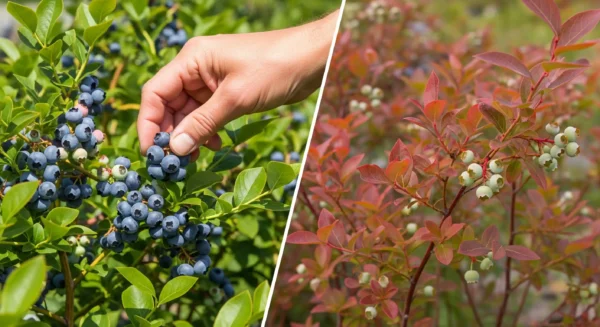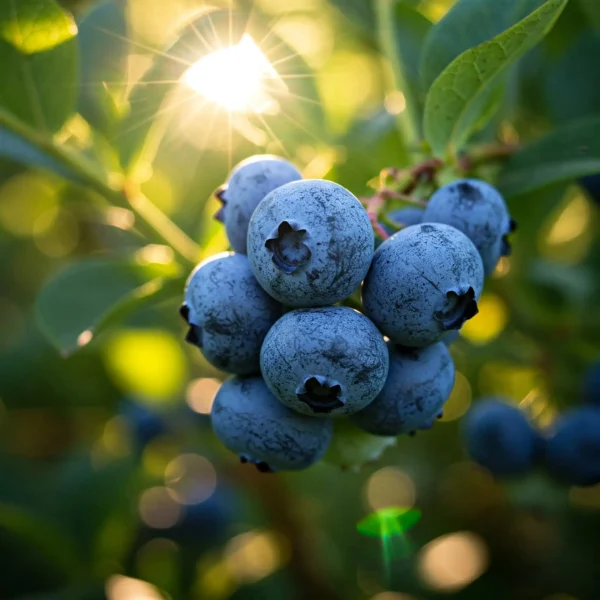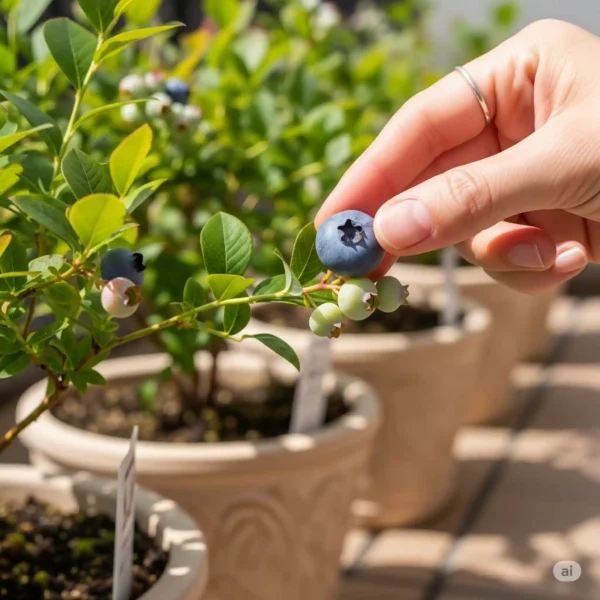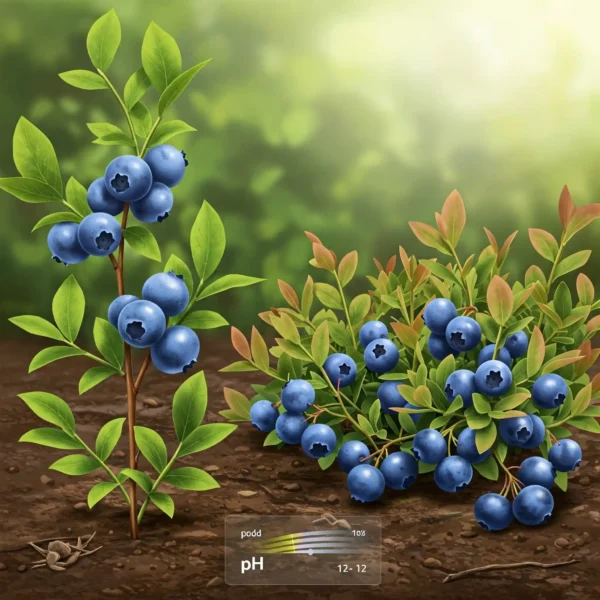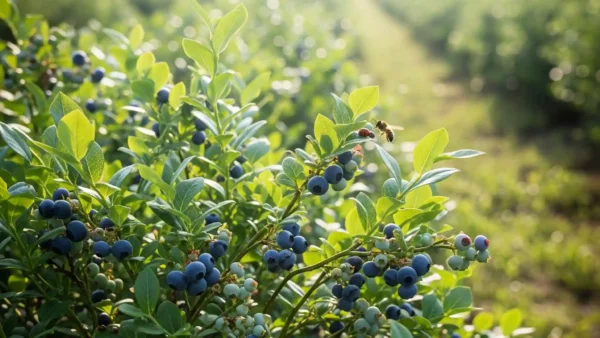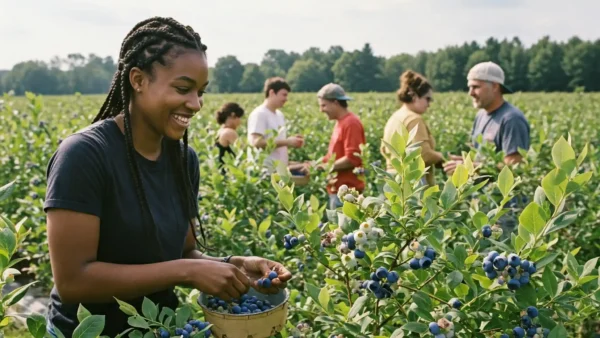When Is Blueberry Picking Season? A Complete Regional Guide
There is a type of peaceful delight that only comes from standing in a field on a beautiful summer day, the sun on your shoulders and the soft buzz of bees in the air. The delight of discovering a perfect cluster of dark, blue-purple diamonds behind a canopy of green foliage and the gratifying plink, plink, plink as they fall into your bucket. The taste of a sun-ripened blueberry, picked with your own hands, is one of the finest delights of summer; it is so powerful that it will carry you exactly back to that moment.
The key question then is, when is blueberry picking season? The amazing reality is that this “season” resembles a sweeping blue wave covering the nation. Although the absolute peak season for much of North America falls from June to mid-August, your starting whistle truly depends on where you live. Knowing this window is essential not just for organizing the ideal family outing but also for gathering berries at their peak in nutrients. The powerful antioxidants called anthocyanins that give blueberries their rich color are most potent just after harvest, before the pressures of transportation and storage take their toll.
This guide is your key to unlocking it all. We will break down the peak harvest seasons for your area, but more importantly, I’ll show you the insider techniques to find a perfectly ripe fruit using your own senses. You’ll learn to think like a farmer and pick like a pro. Forget the calendar; by the time we’re done, you’ll know exactly what to look for.
The Two Ingredients That Control Every Harvest
Before we even get to the maps and timelines, it helps to understand why the season changes. It’s not random; it’s a beautiful dance between two fundamental partners: geography and genetics. Learning these concepts is the first step to becoming a true blueberry whisperer.
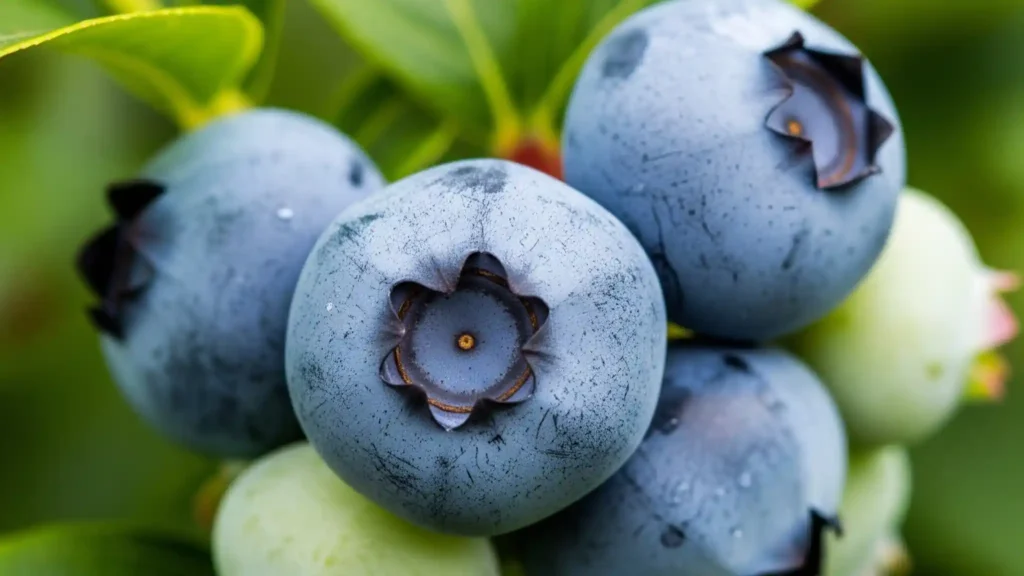
Geography and Climate
This is the most fundamental factor. Like every fruit, blueberries need to accumulate warmth and sunlight to convert carbohydrates into sugars. In the world of horticulture, this is measured in “growing degree days.” Simply put, the warmer South accumulates these heat units first, so the season starts there and progressively travels northward as summer takes hold across the country.
Variety is the Spice of the Season
This is the farmer’s secret weapon for a long and abundant season, and it’s fascinating for home gardeners too. Not every blueberry is created equal! Growers deftly combine early-season, mid-season, and late-season varieties. For example, the “early-season” cultivar ‘Duke’ is prized for its large, firm berries ready in June. Then comes a “mid-season” workhorse like ‘Bluecrop,’ famous for its huge, consistent yields right in the middle of July. Finally, a “late-season” cultivar such as ‘Elliott’ stretches the harvest well into August, long after other bushes are bare.
Your Regional Guide to Peak Blueberry Harvest Times
Now for the part you’ve been waiting for. While a heat wave or cool spell can shift the timeline by a week or two—you should always call a local farm before heading out—this regional guide will give you a very accurate window for when to have your buckets ready.
- The Southeast (e.g., Florida, Georgia, Alabama, Mississippi): The season starts here first. With their warm springs, you can typically find the earliest ripe blueberries in this region from late April to early June. The heat-tolerant Rabbiteye blueberry is the most common type here.
- The Mid-Atlantic & Lower Midwest (e.g., North Carolina, Tennessee, Kentucky, New Jersey): As summer really gets going, the prime window here is typically June to late July. Highbush blueberries are very plentiful in this region. New Jersey is famous for its exceptional crops, and a trip to a “u-pick” farm here is a classic American summer activity.
- The Northeast & Upper Midwest (e.g., Michigan, Maine, New York, Pennsylvania, Wisconsin): This is the iconic, classic summer picking season. The blueberry harvest typically runs from July through August. Michigan is a powerhouse in cultivated Highbush blueberry production, while Maine is the undisputed king of wild Lowbush blueberries.
- The Pacific Northwest (e.g., Oregon, Washington, Idaho): A true berry lover’s paradise. With its ideal climate, the Pacific Northwest boasts a long and plentiful season, typically from late June all the way through August, and sometimes even into September with late-season varieties.
- California and the West Coast: California’s very diverse climate creates a wonderfully long and staggered season, generally running from May through July. The season starts in Southern California and follows the warmth north.
Blueberry Season Regional Quick Guide
| Region | Typical Peak Season | Common Varieties / Notes |
| Southeast | Late April – Early June | Rabbiteye varieties dominate. |
| Mid-Atlantic | June – Late July | A major hub for classic Highbush blueberries. |
| Northeast | July – August | Famous for Highbush and iconic wild Lowbush. |
| Pacific NW | Late June – Late August | Long, bountiful season; world-class quality. |
| West Coast | May – July | Long, staggered season due to varied climates. |
Beyond the Calendar: How to Identify a Perfectly Ripe Blueberry
The calendar gets you to the farm, but your senses will guide you to the best, sweetest fruit. Once you learn these signals, you will never bring home a tart berry again.
Color is Everything
A perfectly ripe blueberry has a deep, uniform blue-purple hue with a silvery-white “bloom” on its skin. This bloom is a natural protective waxy coating and a wonderful sign of freshness! The most important rule: if you see any hint of red, pink, or green on the berry, leave it on the bush. It will not ripen any further once picked.
Feel and Texture
Gently touch a berry. It should feel firm yet plump, with a slight give like a tiny, firm water balloon, not the hardness of a pebble.
The Gentle Tug Test: A Gardener’s Notebook
This is the best pro-tip. When a blueberry is truly ripe, the plant creates a tiny “abscission layer” at the stem, preparing to drop the fruit. This means it will release with the slightest little tug or roll of your fingers. If you have to pull or yank it, it’s not ready yet.
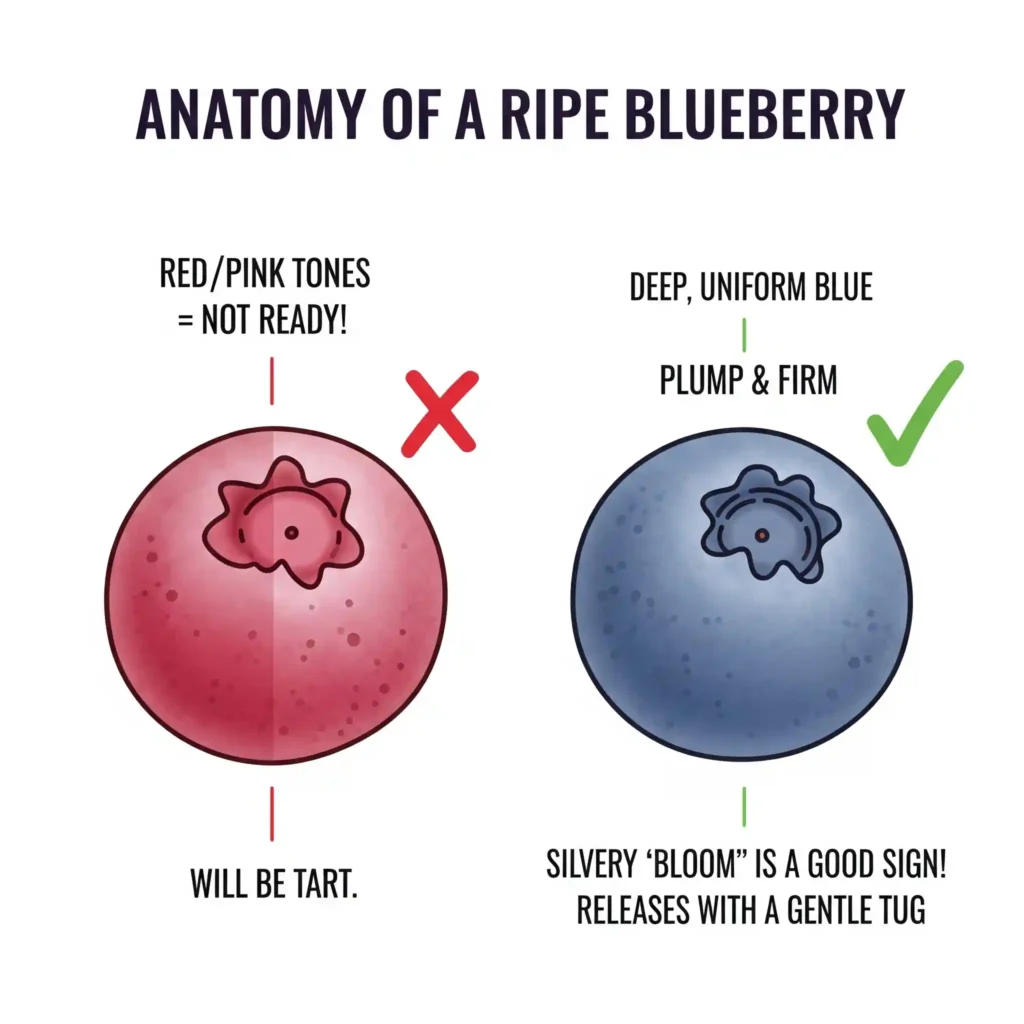
The Art of the Harvest: Your U-Pick Adventure Handbook
A trip to a u-pick blueberry farm is one of the great joys of summer. To make your trip a successful one, here are a few tips I’ve learned over the years.
- Call Ahead: Always call the farm or check their website or social media on the day you plan to go to confirm hours and picking conditions.
- What to Bring: Think “sunny day.” Sunscreen, a hat, water, and comfortable, closed-toe shoes are essential. A smart move is to bring a cooler with ice packs in the car to keep your bounty fresh on the ride home.
- Your Picking Strategy: The most easily accessible fruit is usually picked over. Gently part the leaves to find the treasure within. Use the two-handed method: one hand holds the branch steady while the other gently rolls the ripe berries into your palm.
Advanced Corner: Harvesting From Your Home Garden
For those of us lucky enough to have blueberry bushes in our own backyards, the process is a bit different—it’s a marathon, not a sprint.
Managing Your Varieties
If you planted them, hopefully you have a mix of early, mid, and late-season varieties that will give you a two-month harvest. Watch each of your bushes individually. Your ‘Duke’ might be finishing up just as your ‘Bluecrop’ is getting started. Knowing which is which helps you focus your efforts.
The 7-Day Rule
Most importantly, remember that blueberries on a single bush do not ripen all at once. This is a gift! It means you don’t have to deal with a massive berry glut in one weekend. Plan to visit your bushes every five to seven days. This consistent schedule allows you to pick every fruit at its absolute peak of ripeness and flavor.
Protecting Your Harvest from Birds
You’re not the only one who knows when the berries are ready. Birds—especially robins and catbirds—can strip a bush clean in a single morning. The moment you see your berries starting to turn blue, you need to act. The most practical, non-chemical solution is bird netting. Drape netting over your bushes and secure it to the ground with landscape staples or rocks to keep birds from sneaking in from underneath. It’s a small hassle that ensures the berries end up in your bucket, not theirs.
After the Pick: Keeping Your Harvest Like a Pro
You’re home, triumphant, with buckets of beautiful fruit. So how do you keep it that way?
The Golden Rule of Storage: A Pro-Tip
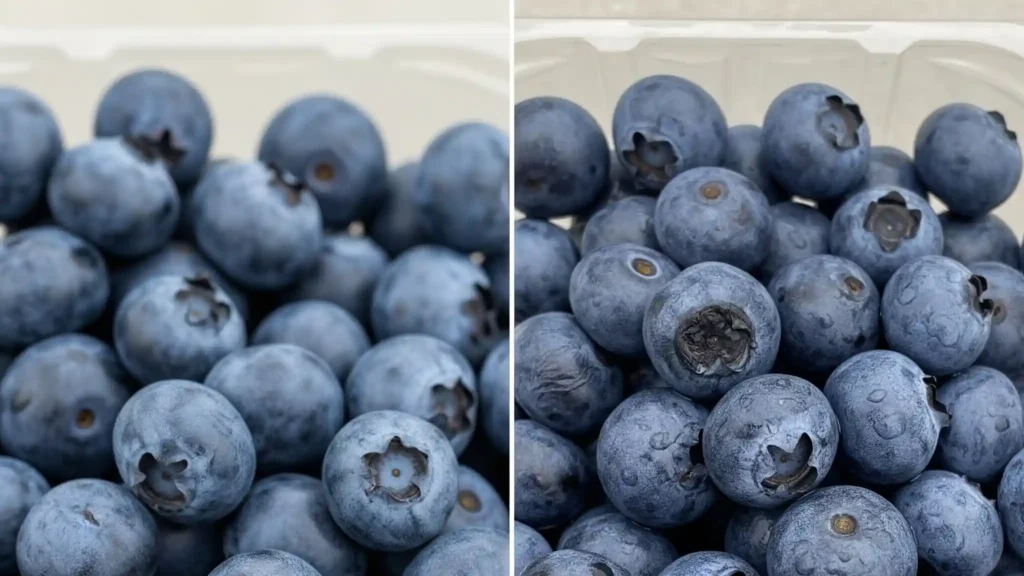
This is incredibly important: DO NOT wash your blueberries until just before you are ready to eat them. I know it’s tempting, but washing removes the protective bloom and introduces moisture, which is the #1 enemy of a fresh berry and the fastest way to encourage rot.
- Refrigeration: Gently sort out any leaves, stems, or squashed berries. Place the dry, unwashed berries in a breathable container—the original clamshells are perfect—and pop them in your refrigerator’s crisper drawer. Stored this way, they should stay fresh for one to two weeks.
- Freezing: Flash freezing is the best way to enjoy that summer flavor in the dead of winter. Spread your unwashed berries in a single layer on a baking sheet, freeze them solid, then transfer them to a freezer bag. They will remain separate so you can pour out just what you need all year long.
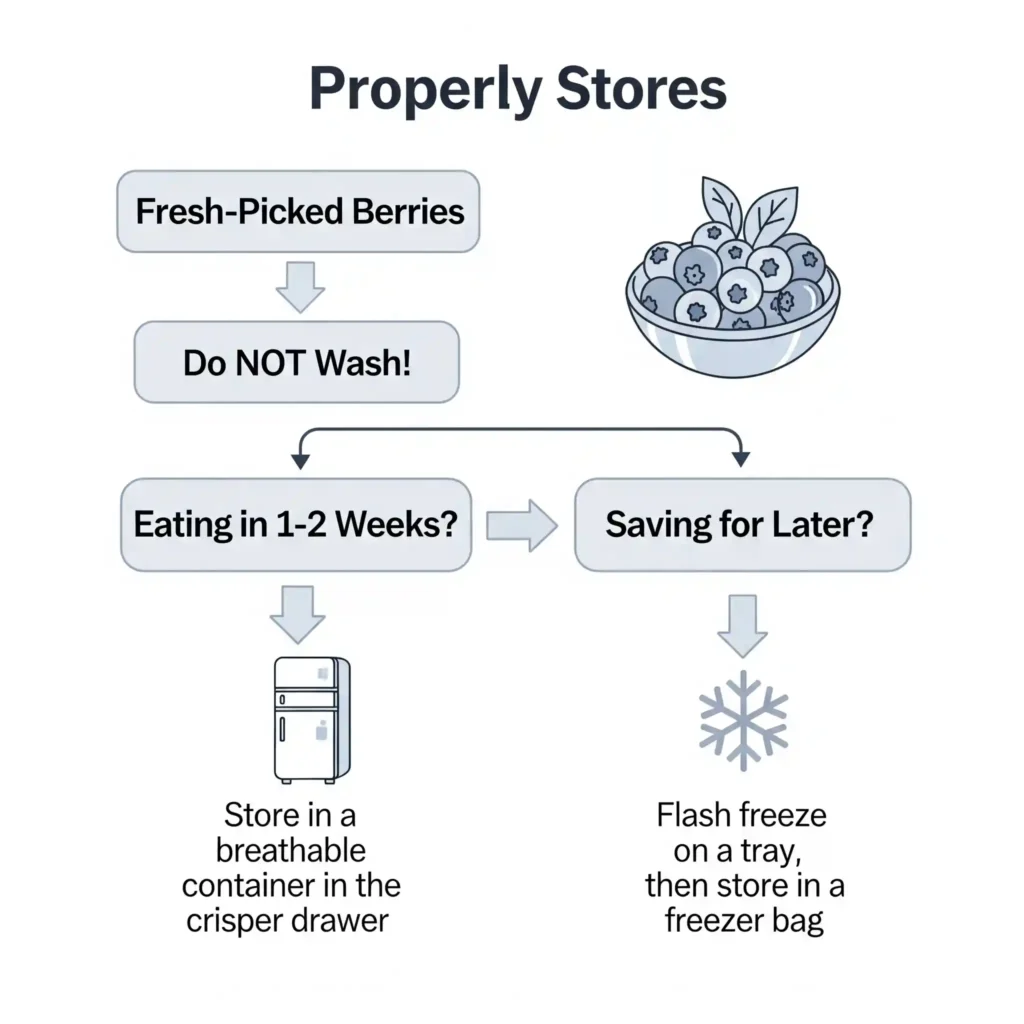
In Conclusion
So there you have it. When blueberry picking season is, is less about a specific date on a calendar and more about a beautiful, predictable journey. It’s a dance between the sun’s path across the country and the wise choices of farmers, but the real secret weapon is you. You now know that the true mark of ripeness is not found in an app, but in the deep blue color of a berry, its gentle plumpness, and the easy way it lets go when it’s ready.
With this knowledge, I hope you feel empowered and excited to get out there and find your own harvest, continuing a timeless annual ritual. There is nothing quite like the pride and pure flavor that comes from eating something you’ve gathered with your own two hands. It’s a taste of success, a taste of summer, and a memory you will cherish long after the last berry is gone.
Frequently Asked Questions
What is the best time of day to pick blueberries?
The very best time is early morning. The berries are still cool from the night air, making them firm and less likely to bruise.
Why are the blueberries I picked so tart?
This is almost always because they were picked too early. If a blueberry has any pinkish or reddish color on it, it has not developed its full sugar content. Remember, they don’t ripen after you pick them!
How long does blueberry season usually last at one farm?
Thanks to planting multiple varieties, most farms are able to offer picking for four to six weeks. However, weather can always impact this, so always check with the farm.
Can I eat blueberries straight from the bush?
Absolutely! A few “test” berries are part of the fun. Giving your main harvest a gentle rinse just before eating at home is a good idea to wash off any field dust.
Are wild blueberries different from cultivated ones?
Yes! Wild blueberries (lowbush) are typically smaller and have a more intense, complex flavor, making them a favorite for baking. Cultivated blueberries (highbush) are the larger, plumper berries perfect for fresh snacking.


